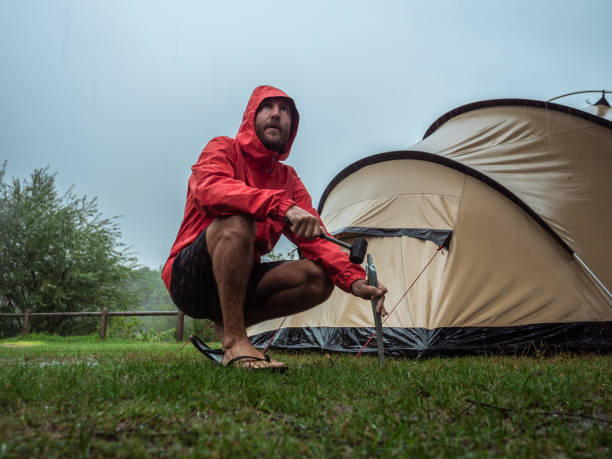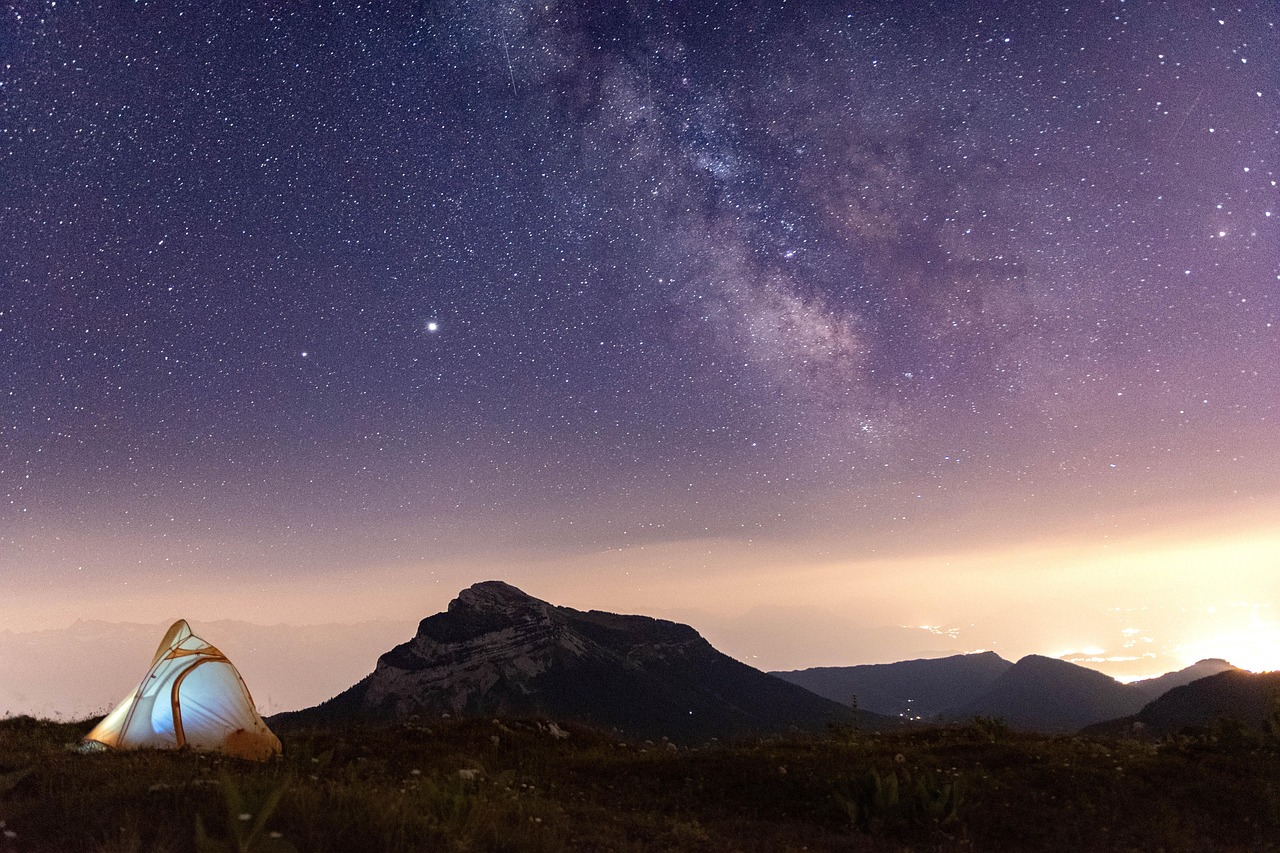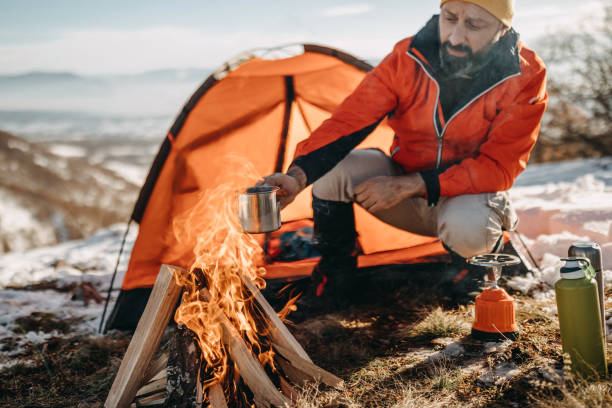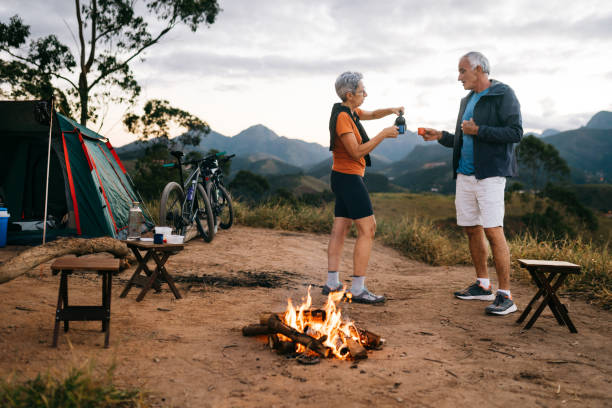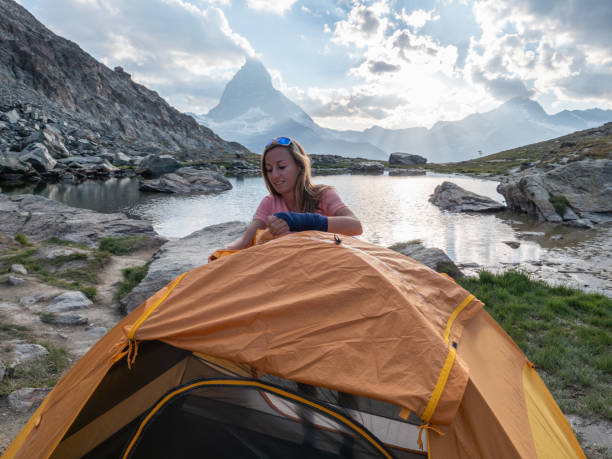If you’ve ever been caught in a sudden downpour while camping, you already know—not all tents are created equal. Not every tent is a heavy rain camping tent! We’ve had our share of soggy sleeping bags and leaky seams. That’s why we decided to go on a mission: to test some of the most talked-about camping tents in real heavy rain conditions. No fair-weather setups here—we took these tents into the wild, from misty mountain trails to backwoods forest clearings, and let Mother Nature throw everything she had at us.
We’re a group of weekend warriors, adventure seekers, and full-on gear nerds who camp rain or shine (but mostly rain, lately). This post is for anyone who’s tired of reading generic reviews that say a tent is “waterproof” without proving it. We pitched each of these in less-than-perfect conditions and lived in them through storms, gusts, and relentless drizzle.
So if you’re searching for a best tent for heavy rain and wind that’s actually been through it, you’re in the right place. Here are our honest takes—from leaks and ventilation to the little details that made all the difference.
Table of Contents
- TETON Sports Mountain Ultra Tent
- Kelty Freestanding Camping Tent
- OneTigris Backpacking Tent
- Near Zero Backpacking Tent
- ShinHye Backpacking Tent
- OneTigris Camping Tent
- Happy Travel Camping Tent
- Our Verdict!
- How to Choose the Best Heavy Rain Camping Tent
- Waterproof Materials & Sealed Seams
- Well-Designed Rainfly & Vestibules
- Ventilation Without Leaks
- Can tents handle heavy rain?
- What is the best material for tents in the rain?
- How do you keep a tent dry in heavy rain?
- How do I rain proof my tent?
- How to tell if a tent is waterproof?
7
TETON Sports Mountain Ultra Tent
Most Spacious. We took the 4-person version of the TETON Sports Mountain Ultra Tent on a weekend trip into the foothills, where the forecast called for “scattered showers.” Spoiler alert: it poured for two days straight. Luckily, this tent did exactly what it promised—it stayed bone dry inside.
Setting it up was a breeze. The rainfly fits snugly over the micro-mesh inner tent, and the whole thing was up and guyed out in under 10 minutes. We immediately noticed the ventilation—it’s got a 360-degree airflow design, and even fully sealed up, it never felt muggy inside. The full mesh dome was great for stargazing the first night (before the rain rolled in), and waking up with that open-sky view was magic.
One heads-up: the stakes that come with it? Pretty flimsy. Ours bent on the first go. We had a couple from another tent and swapped them in—worked like a charm after that. So yeah, budget $10 for better stakes and you’ll be golden.
Also, this is the best tent for heavy rain if you’re motocamping like we do sometimes, the 4-person version makes way more sense than the 2-person. Not much heavier, but so much more livable. Bonus: packs down small and quick when it’s time to head home.
P.S. Feel free to browse the official website of the brand for a variety of interesting options.
Pros:
✅ Excellent ventilation with full mesh top
✅ Waterproof rainfly performs well in heavy rain
✅ Packs down easily for transport
Cons:
❌ Included stakes are flimsy and insufficient
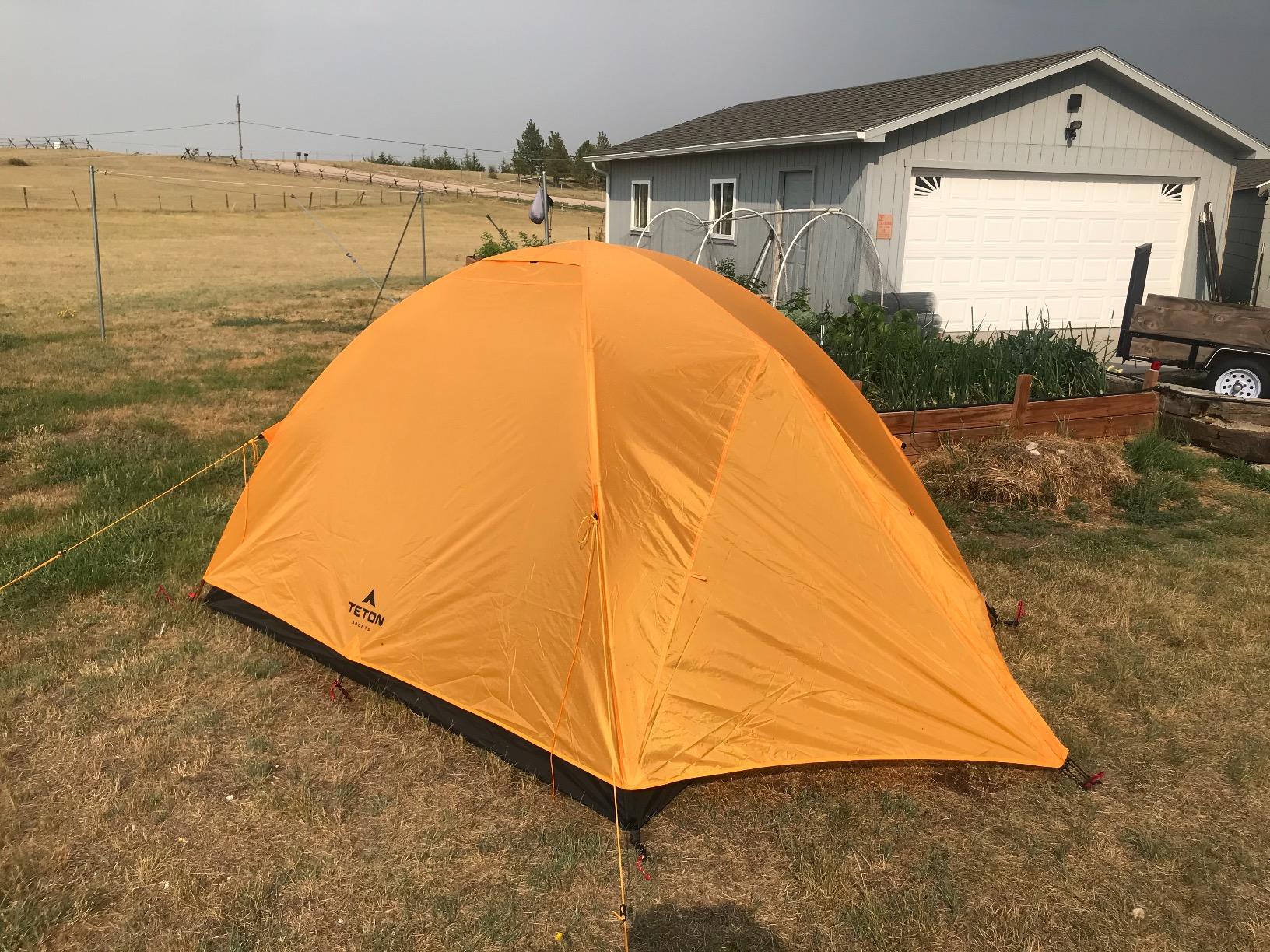
6
Kelty Freestanding Camping Tent
If we had to describe the Kelty Freestanding Camping Tent in one word, it’d be reliable. We brought this one out on a family car camping trip to the lake—rain, sand, wind, and all. It’s not just waterproof—it’s smartly designed.
The freestanding setup with quick corners made it super intuitive. We had it standing within 15 minutes, rainfly and all. It’s a full-size tent, with a generous footprint and two big vestibules that kept all our muddy boots and gear dry. Honestly, it felt kind of luxurious for a tent.
The fabric felt burly (68D poly with 1800mm waterproof coating), and when the winds picked up one night, this tent held strong. The hybrid frame felt sturdy, and we loved the little touches: gear pockets placed halfway up the wall (easier to grab stuff without bending down), a loop for hanging a lantern, and color-coded attachments to avoid setup confusion.
One minor gripe? The included footprint was smaller than the tent floor and took some fiddling. But other than that, it was rock solid. Great for car campers, couples, or anyone who wants a heavy-duty tent without the ultralight compromise.
Pros:
✅ Freestanding design is quick and simple to set up
✅ Dual vestibules offer great storage space
✅ Solid build quality with wind resistance
✅ Best tent for heavy rain and wind
Cons:
❌ Footprint is smaller than tent floor and awkward to attach
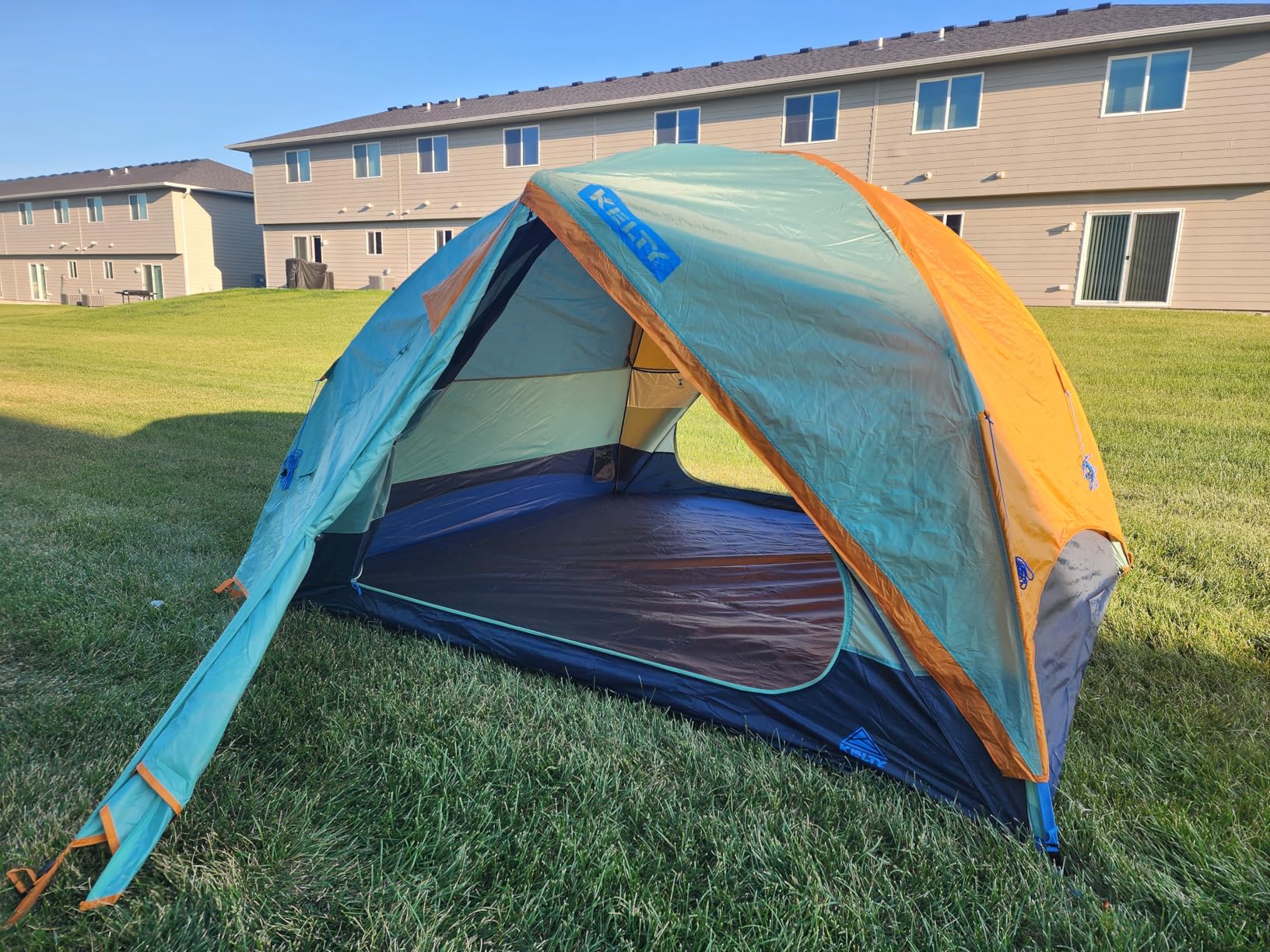
5
OneTigris Backpacking Tent
This one surprised us. We brought the OneTigris Backpacking Tent on a trail hike out in pine country—lots of wind, light drizzle, and one torrential downpour in the early morning hours. It held up like a champ.
For something this light, the weather resistance was impressive. The 20D plaid ripstop polyester with 1500mm waterproofing and 75D nylon base kept us dry and warm. And despite the gusty wind, the tent’s hexagon shape and low profile gave it solid stability—we barely felt the swaying.
Set-up was dead simple. The aluminum poles locked in fast, and the whole thing packed down into a compact stuff sack that slid easily into a backpack. It’s technically a 2-person tent, but if you’re over 6 feet or just like space, it’s best for solo trips. That said, we did fit two people snugly with room for gear in the vestibules.
Only downside? You might want a beefier groundsheet for rough terrain. But at this price and weight, the OneTigris is a killer deal, the best backpacking tent for heavy rain. We’re already eyeing their camo version for stealthier treks.
Also, check out the official website for better suited options for best camping tents!
Pros:
✅ Lightweight yet durable ripstop fabric
✅ Stays dry in wind and rain
✅ Quick setup with compact packed size
Cons:
❌ Groundsheet recommended for rocky terrain
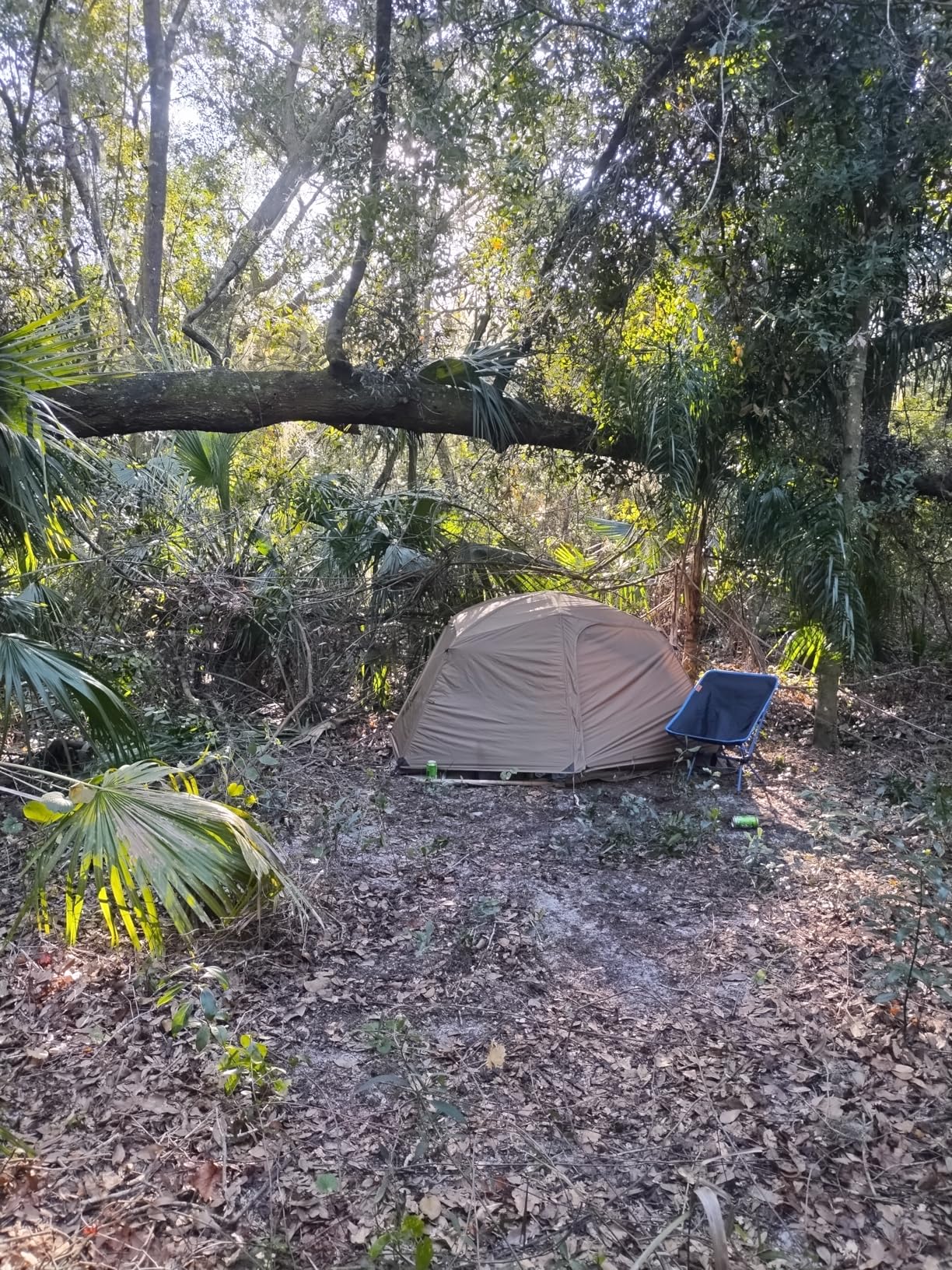
4
Near Zero Backpacking Tent
Let’s talk about the Near Zero Backpacking Tent—an underdog that quickly became a team favorite. We took this one deep into the Sierra Nevada trails, where we knew rain was likely. It didn’t just survive—it thrived.
Weighing just 1.6 kg, this tent was a dream to carry. When you’re five miles in and gaining elevation, every ounce matters. Setup was straightforward thanks to the aluminum frame and included stakes. Even solo, it was up in under 10 minutes.
Then came the real test. On night three, the skies opened up and didn’t stop for hours. Despite the nonstop downpour and gusty winds, we stayed perfectly dry. The waterproof mesh was clutch—it blocked the rain but still let the air flow, so no condensation built up inside. There’s also a decent-sized vestibule, enough to stash a pack or even cook in a pinch (carefully, of course).
Inside, it felt roomy for one—enough space to stretch out, stash gear, and even bring our trail dog along. For the price, it rivals tents twice as expensive. If you’re an experienced backpacker but not ready to drop $600 on a tent, this one’s your sweet spot.
Check out our exclusive roundup of the Best Tents for Large Groups Camping (6+ Person Options)!
Pros:
✅ Ultralight and ideal for long hikes
✅ Withstands rain and wind impressively
✅ Spacious interior for solo trips
Cons:
❌ Not truly suitable for two people
3
ShinHye Backpacking Tent
Easiest Setup. We took the ShinHye Backpacking Tent out on a weekender near the river—an area known for unpredictable weather and thick morning fog. It was our first time trying this brand for heavy rain camping, so we weren’t sure what to expect. By the end of that trip, though, we were impressed.
First off, setup was shockingly easy. The freestanding design and aluminum poles meant we had it up in under five minutes. Even our friend, who had never set up a tent solo, managed to get this thing pitched without a hitch. The SBS zippers glided like butter—no snags, no stress.
But the real star was the waterproofing. ShinHye’s got a 190T polyester rainfly with a PU5000 coating—and believe me, it holds up. One night, we got hit with a solid few hours of rain. Not a drop inside. The 210D Oxford floor held up just as well, even in spots where our footprint didn’t fully cover the ground.
We noticed it ran a bit roomier than expected, which was a nice surprise. Two of us fit with a little space to stash gear and snacks. Ventilation was also on point thanks to the mesh windows and double-door setup, although we did wish the outer door zipped fully closed on the bottom—it let in some dust and leaves when the wind picked up.
Still, for the price, this tent punches above its weight. Our only gripe? The poles seem a little fragile—might not hold up to years of heavy use. But for a few trips a year? Absolutely worth it.
P.S. Don’t miss out this detailed review of the product by Innovate 4 Life on YouTube!
Pros:
✅ Strong waterproofing with PU5000 coating
✅ Great airflow and easy solo setup
✅ Budget-friendly with quality materials
Cons:
❌ Outer door doesn’t fully zip at the bottom
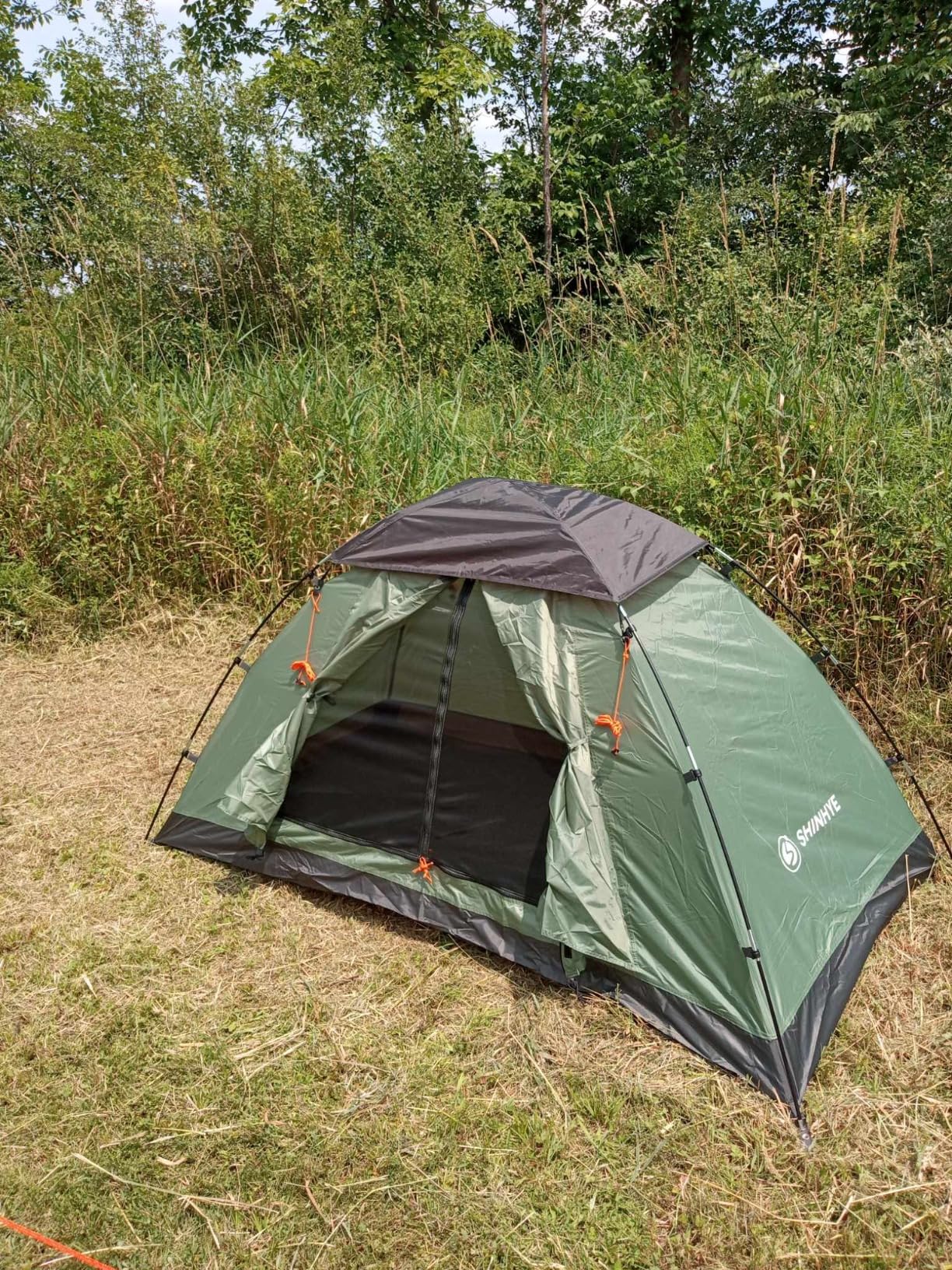
2
OneTigris Camping Tent
For our early spring trip into the high desert, we brought the OneTigris Camping Tent—and man, did it deliver. This thing is like the Swiss Army knife of tents: lightweight, durable, and surprisingly versatile.
Weighing just under 5 lbs (yeah, slightly more than the listed 4.4), the STELLA was easy to haul in our packs, even through a windy canyon hike. Setup was intuitive—cross-pole design with corner anchors meant no guesswork. We had it ready before the sun dipped behind the rocks.
And speaking of wind… we had one night where gusts were pushing 30 mph. This tent barely flinched. The 20D nylon shell, 40D bottom, and blackout removable outer tent made it feel rock-solid. Inside, the white inner fabric helped brighten things up, and it was surprisingly warm. We slept in 20°F temps with our 0° sleeping bags and were way more comfortable than in any mesh-walled 3-season tent we’ve used.
It’s not all perfect though—we missed having overhead storage pockets for headlamps and other small stuff. There are little mesh pockets by the doors, but they don’t hold as much.
Still, in terms of 4-season usability, the STELLA stood tall. If you’re a serious camper who doesn’t want to drop $400+ on a bombproof shelter, this is a smart, sturdy alternative that doesn’t feel like a compromise.
On a side note, you might also be interested in The Best Wall Tents for Winter Camping: Stay Toasty in the Wild!
Pros:
✅ All-season build with high weather resistance
✅ Warm and comfortable in cold temperatures
✅ Packs down small and sets up fast
Cons:
❌ Lacks interior gear storage options
1
Happy Travel Camping Tent
Best Overall. We saved this one for our most relaxed adventure—beachside camping with minimal gear and a lot of free time. The Happy Travel Camping Tent was our pick for that trip, and honestly, for a budget tent, it really held its own.
The hydraulic pop-up system? Game changer. We literally lifted the top, popped it into place, and clicked the corners down. The whole setup took less than a minute, and takedown wasn’t too bad once we figured out the trick to folding the poles.
Inside, the tent was surprisingly roomy for two people. At 90.5” x 67”, we had space for our sleeping pads, some snacks, and even a small fan for airflow. The double doors—each with zippered mesh and solid panels—let us control ventilation easily. And even though it got warm during the day, we were able to cool it down just by unzipping both sides and letting the breeze roll through.
Now, the downsides. The material, while waterproof (PU3000), felt a little thin—probably not the best for hardcore conditions or long-term use. We also had to be extra careful packing it up; those fiberglass poles are flexible but not indestructible.
That said, when a little rain hit us on day two, the tent stayed completely dry, and the rainfly cover added extra reassurance. If you’re a casual camper or just need a quick setup for a short trip, this tent’s convenience is hard to beat. Just maybe don’t expect it to outlive a decade of hardcore use.
Pros:
✅ One-minute hydraulic pop-up setup
✅ Great ventilation and privacy options
✅ Lightweight and easy to carry
Cons:
❌ Thin materials may wear out over time
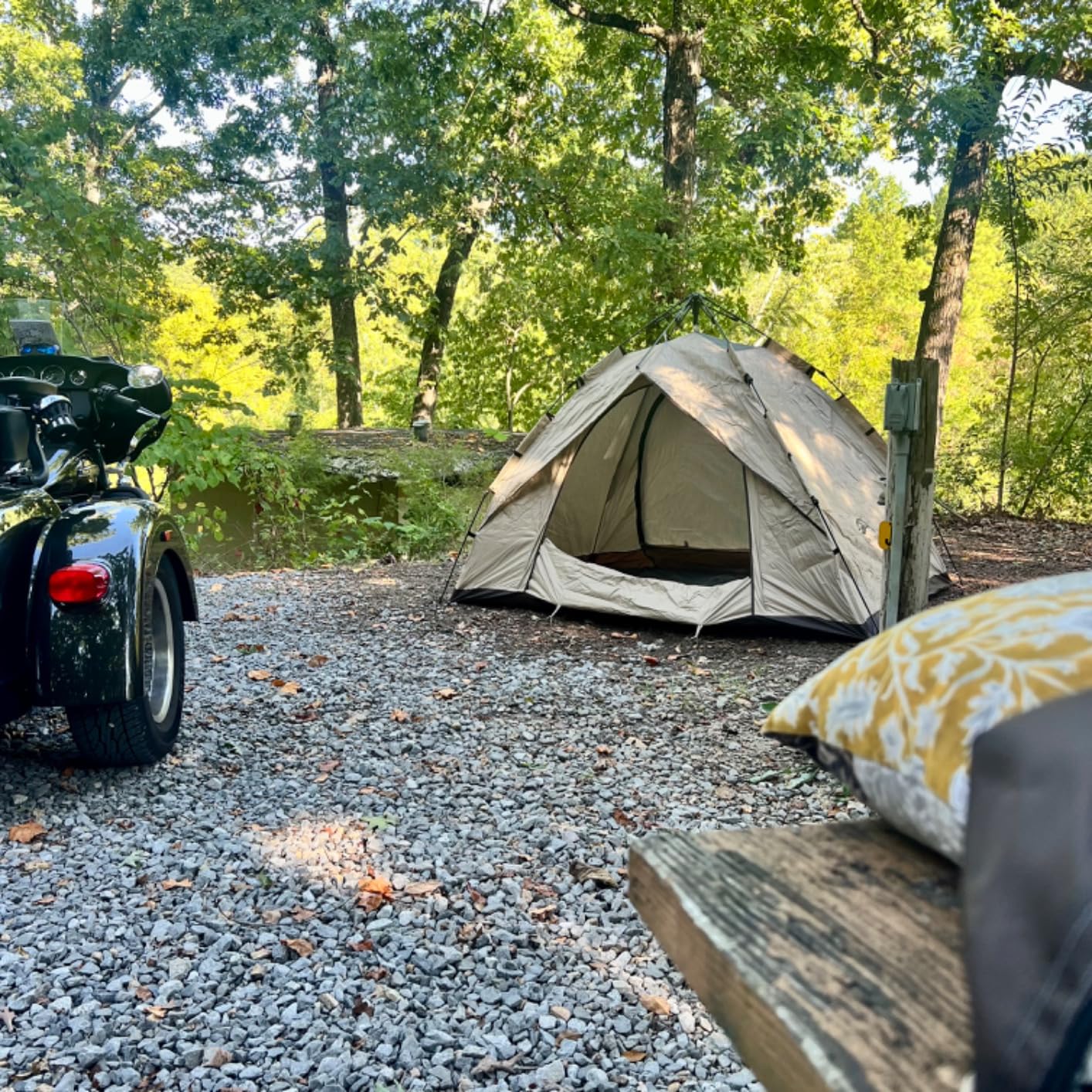
Our Verdict!
From the above roundup of the heavy rain camping tent picks, we chose the Happy Travel Camping Tent as the Best Overall option because of its amazing performance and perfect value for money. Having said that, two other important options from the list also stood out in their performance of a specific feature. Check these out below!
- Most Spacious: TETON Sports Mountain Ultra Tent
- Easiest Setup: ShinHye Backpacking Tent
How to Choose the Best Heavy Rain Camping Tent
When you’re heading into the wild for tent camping in heavy rain and the forecast looks troublesome, choosing the right heavy rain camping tent can mean the difference between a cozy night’s sleep and waking up in a puddle. After weathering more storms than we can count, here’s what we’ve learned to look for in a truly rain-ready tent:
✅ 1. Waterproof Materials & Sealed Seams
Not all “waterproof” claims hold water—literally. Look for tents made with high-denier fabrics (like 210D Oxford or 20D Nylon) and a PU coating of at least 3000mm. That rating tells you how much water pressure the tent fabric can handle before it leaks. Even more important? Fully taped or sealed seams. These are the first places water tries to sneak in during heavy downpours, so sealed seams are a non-negotiable for serious rain protection.
✅ 2. Well-Designed Rainfly & Vestibules
In heavy rain in tent, the rainfly is your first line of defense. A full-coverage rainfly should extend well beyond the tent’s body, shielding you from sideways rain and giving you a dry entry/exit space. Bonus if the tent includes vestibules—these overhangs are great for stashing wet boots and gear without dragging water inside. Always choose a tent with a detachable or adjustable fly for versatility in changing weather.
✅ 3. Ventilation Without Leaks
Good airflow matters—even in a storm. Without it, you’ll wake up to condensation dripping from the ceiling. Look for tents with mesh panels, roof vents, and double-door designs that allow cross-ventilation while keeping rain out. The best heavy rain tents strike a balance: they breathe well without sacrificing waterproofing. Trust us, nothing ruins a trip faster than sleeping in a swamp of your own breath.
Can tents handle heavy rain?
Yes, quality tents can absolutely handle heavy rain—if they’re built for it. The key is choosing a tent with high waterproof ratings (3000mm+), full-coverage rainfly, taped seams, and a bathtub-style floor that keeps water from seeping in at the edges. Pair that with strong poles, proper ventilation to reduce condensation, and secure guy lines, and you’ve got a shelter that can take on serious storms without flinching. Not all tents are up to the task, but the right one will keep you dry, warm, and happily out of the rain.
What is the best material for tents in the rain?
The best material for tents for camping heavy rain is polyester or nylon with a high PU (polyurethane) coating, typically rated at 3000mm or higher. These synthetic fabrics are naturally water-resistant, quick-drying, and don’t sag when wet like canvas can. Nylon is lighter and often used in backpacking tents, while polyester holds up better against UV damage. Look for tents with taped or sealed seams and a bathtub-style floor to prevent leaks from the ground. For serious rain protection, these materials paired with a full-coverage rainfly are the gold standard.
How do you keep a tent dry in heavy rain?
To keep a tent dry in heavy rain, start by setting it up on high, level ground—never in a dip or hollow where water can pool. Use a full-coverage rainfly and make sure it’s taut and angled to let water run off quickly. Always seal the seams (even if pre-taped) and use a footprint or groundsheet slightly smaller than the tent floor to prevent water from channeling underneath. Proper ventilation is key—crack the vents or mesh panels to reduce condensation build-up inside. And finally, don’t let wet gear touch the inner walls—once water finds a path, it’ll follow. Rain doesn’t have to ruin your trip if you prep smart!
How do I rain proof my tent?
To rainproof your tent, start by applying a waterproofing spray (like Nikwax or Scotchgard) to the rainfly and outer walls, focusing on seams and high-contact areas. Then, seal the interior seams using a seam sealer—this prevents water from sneaking in through stitching holes. Always use a footprint or tarp underneath your tent to block ground moisture, making sure it doesn’t stick out past the edges (or it’ll collect rain). Lastly, pitch your tent on slightly elevated ground, and angle the rainfly taut for proper runoff—no saggy puddles on top. Done right, you’ll stay bone dry camping in very heavy rain!
How to tell if a tent is waterproof?
To tell if a tent is waterproof, check the fabric’s waterproof rating—measured in millimeters (mm) and usually labeled as PU-coated (like PU3000). A rating of 1500mm or higher generally means it can handle steady rain, while 3000mm+ is ideal for heavy downpours. Look for sealed or taped seams, a bathtub-style floor (where the bottom fabric extends up the sides), and a full-coverage rainfly. Mesh walls alone won’t cut it—so if the rainfly doesn’t go all the way down or the seams aren’t sealed, you’re likely to get soaked when the storm rolls in.
